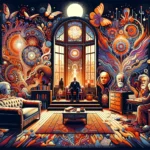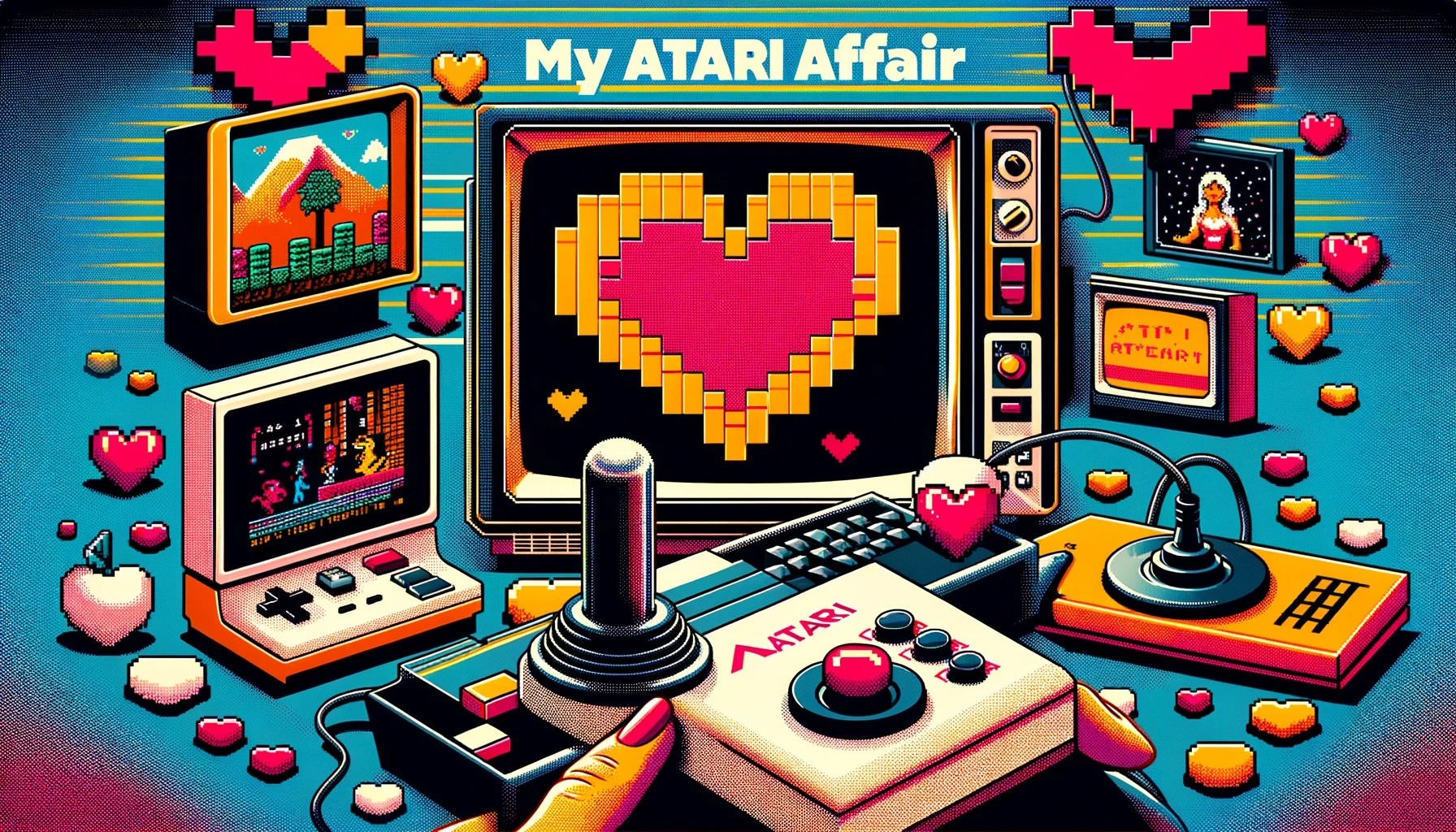My Atari Affair: A Pixelated Love Story
Way back in the murky mists of the 1980s, nestled between the cassette tapes and under a pile of Rubik’s Cubes, there was my first love: a chunky, plastic box of pixelated joy known as the Atari 2600. For a kid growing up in the age of shoulder pads and parachute pants, this was the epitome of high-tech wizardry.
The love affair began one Christmas morning. The tree was lit, and the scent of mom’s homemade cinnamon rolls filled the air. I tore through the wrapping paper and there it was, in all its wood-panel glory. The console was accompanied by a sacred artifact, a sacred text of sorts: The Atari catalog. A whole universe of pixelated adventures lay within those pages, promising hours of endless, mind-numbing enjoyment.
My inaugural game was Space Invaders. The sense of achievement I felt when I hit that first row of pixelated aliens was unparalleled. It was simple, it was maddeningly repetitive, and I loved it. It wasn’t just about the game itself; it was the whole ritual. Slotting the hefty cartridge into the console, the satisfying click of the switches, even the strangely hypnotic hum of the hardware.
Late-night gaming sessions under the soft glow of the cathode-ray tube became a weekend tradition. With each twist and turn of the joystick, I navigated pixelated mazes, dodged digital asteroids, and drove chunky race cars that bore an uncanny resemblance to cheese wedges. The graphics were rudimentary at best, the sound effects an assault on the eardrums, but in my imagination, they were as real and thrilling as anything the world outside could offer.
Fast forward to today, where gaming has transformed into a billion-dollar industry with graphics so realistic you can see the sweat on a character’s forehead. My kids are into the latest PlayBox or whatever the newest gaming console is called, with their virtual reality and cloud-based game streaming. But me? I’m still smitten with my Atari.
Despite the leaps and bounds in technology, I’ve kept my Atari 2600, albeit in the attic rather than the living room. I might have traded the Rubik’s Cubes for a smartphone and the cassette tapes for a Spotify subscription, but there’s something about the simplicity of those vintage games that modern technology can’t replicate.
Every now and then, on a quiet Saturday evening, I’ll dust off my trusty Atari and fire it up, with the familiar static hum and chunky pixelated graphics taking me back to simpler times. The kids might laugh at the blocky aliens and the tinny sound effects, but to me, it’s a warm, comforting trip down memory lane. And as I watch my children immersed in their high-definition games, I can’t help but think that they’re missing out on the sheer joy of guiding a pixelated frog across a digital road. But then again, maybe that’s just the Atari love talking.
When I reflect on my ‘Atari days,’ I realize it was never just about the games themselves. It was about the sense of wonder and discovery, the thrill of conquering a new level, the camaraderie when my buddies and I huddled around that bulky TV set in my parent’s basement, our thumbs blistered but spirits unbroken. It was about a certain rawness, an intimacy that came from the limitations of technology, forcing us to fill the gaps with our imagination.
This magic isn’t lost on me even today as I introduce my kids to the pixelated gems of yesteryear. Despite the wide-eyed incredulity at the primitive graphics and simplistic gameplay, I see sparks of fascination, echoes of my own childhood enthusiasm. I see them deriving the same pleasure in guiding that pixelated Pac-Man around its maze, as they do in orchestrating grand battles in their hyper-realistic, VR-aided adventures.
Sometimes, I think it’s the tactile sensation of the joystick, the familiar click of the buttons, the hum of the console warming up – all those little reminders of a time when technology was as much about the experience as it was about the purpose. The Atari era was one where the novelty of digital interaction was a marvel in itself. The gaming industry has come a long way since then, and as much as I love the advancements we’ve made, I can’t shake off the charm of those rudimentary days.
The gaming world of my children is a vastly different landscape. Their experiences are filled with detailed open-world environments, complex storylines, and a level of interactivity that I could only have dreamed of during my early gaming days. And yet, I watch them enjoy Frogger or Space Invaders with an enthusiasm that matches their passion for the latest high-definition RPGs.
I suppose this just goes to show that no matter how much technology advances, how much more lifelike our video games become, there’s a universal allure to the fun and challenge of gameplay, no matter how simple or pixelated it may be. And so, I hold onto my Atari, a memento of my youth and a testament to the timeless joy of gaming. Whether we’re hopping across a busy road as a frog or saving pixelated galaxies, it’s these shared experiences that knit us together, a common thread that transcends the bounds of technology and time.










